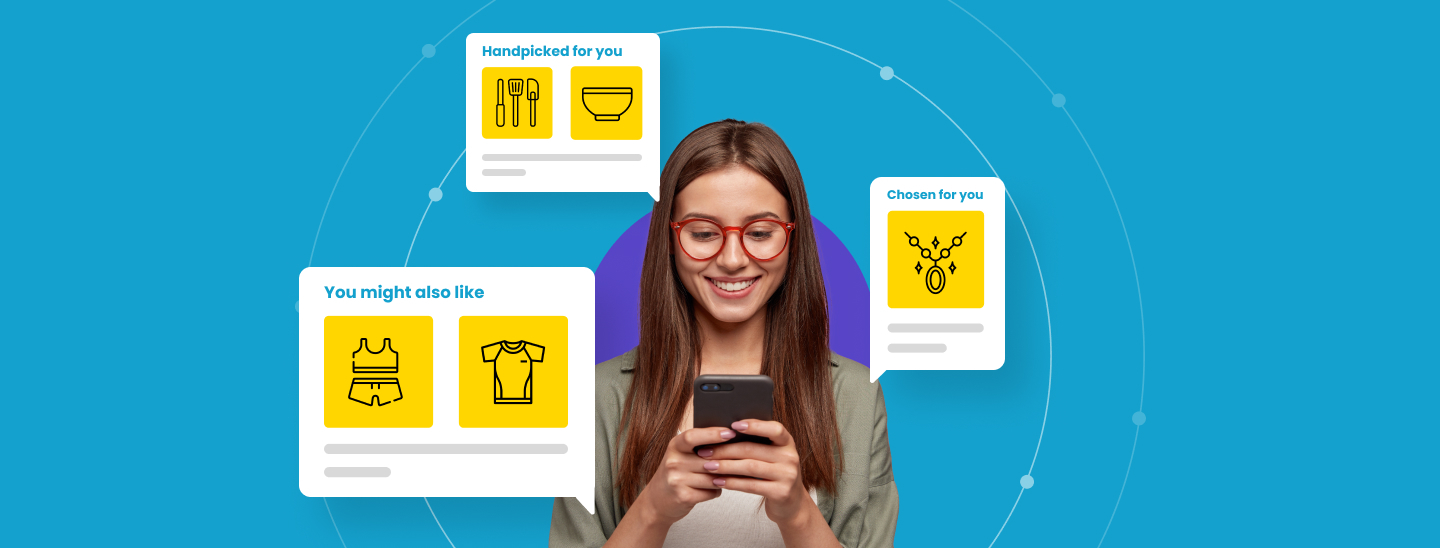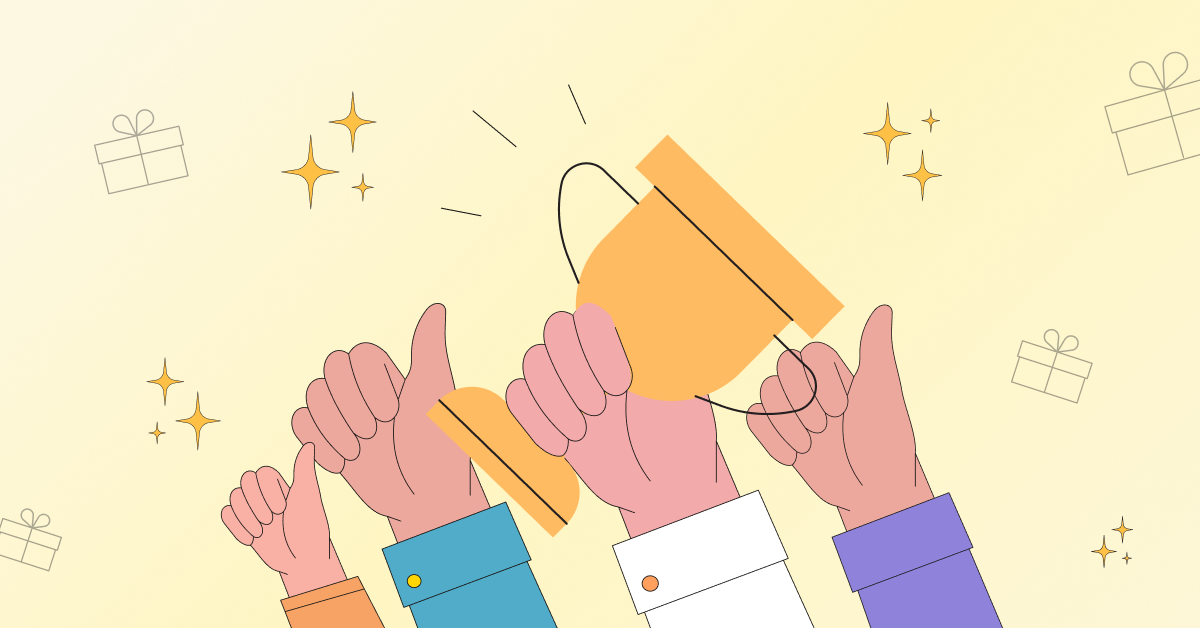The customer is at the center of the universe for D2C brands. As the D2C landscape continues to evolve, and with competition getting stiffer, marketers are finding it challenging to retain customers and elevate the overall customer experience. Increasing customer conversions and boosting customer retention is a big puzzle that D2C businesses need to solve for.
On the other hand, the path to purchase for customers is getting more complex. Most brands have limited tools to understand the motivations of customers and the digital touchpoints that lead up to their transactions.
To stay ahead of the curve and adapt to shifting customer preferences in the digital age, D2C brands need the right technical support to make sense of this valuable data. And build strong relationships with their customers through personalized and data-driven engagement strategies.
In fact, a recent study states that brands that improved their digital maturity – the ability to deliver relevant content to customers at the right time across the purchase journey – reported cost savings of up to 30% and revenue increases of as much as 20%.
In this article, you’ll learn how D2C brands, at different levels of digital maturity, can increase conversions, boost customer retention, and grow their loyal base with the right technical support. Let’s dive right in!
Stages of digital maturity of your D2C business
The levels of digital maturity can vary considerably among D2C businesses and so do the results that marketers achieve at each stage. So, we have divided the digital maturity of businesses into four different stages – Egg Stage, Caterpillar Stage, Imago Stage, and Nirvana Stage.
The digital maturity framework will help you understand where your D2C business falls in terms of digital maturity today and help you to:
- Align goals and objectives
- Formulate an action plan
- Measure output against benchmarks

Stage 1: The Egg Stage
This is the stage where D2C businesses start their journey. Or those who are making a transition from offline to online. As they are working on building their online presence, they are spending more on acquiring new customers and have fewer repeat purchases that lead to low LTV (Lifetime Value) at this stage. Businesses at the Egg Stage don’t have the capability to gather first-party data to derive and we typically see lots of data and channel silos.
Use Cases to implement at this stage
If your business is at the Egg Stage, you can make use of various channels like SMS, onsite notifications, and surveys to engage with your users. And implement simple use cases like cart abandonment campaigns to drive conversions.
Use case #1: Catch hold of users bouncing off the app/website
Show an on-site notification to users who are about to abandon your site. This is also known as leave intent targeting. The idea is simple – make one last attempt to close a sale, before the user leaves your site.

Use case #2: Encourage cart abandoners to complete the purchase
Send an SMS or a web push campaign to the segment of users who didn’t complete a purchase and nudge them to make a transaction.

Use case #3: Collect meaningful insights from cart abandoners
Use on-site surveys to gain insights from cart abandoners who didn’t complete their purchase.

Stage 2: The Caterpillar Stage
At this stage, we start to see organizations using a mix of channels to engage with their users. They now have in-house teams to carry out various organizational functions. These organizations lay more focus on gathering and tracking user data using an analytics platform. They also reduce their dependence on costly acquisition channels like AdWords and use other mediums like content and affiliate marketing to lower their CAC (Customer Acquisition Cost).
Use Cases to implement at this stage
Here are a bunch of use cases you can implement at the Caterpillar stage:
Use Case #1: Nudge cart abandoners to complete their purchases
Encourage abandoners to complete the purchase by sending them a discount coupon.

Use Case #2: Run flash sale campaigns to drive conversions
Run flash sale campaigns to create brand exposure, grow user base, and boost conversions.

Use Case #3: Wish your users on their birthdays
Send birthday campaigns to establish a strong personal connection with your customers and drive purchases.

A roadmap to digital maturity (Transition from Stage 1 to Stage 2)
These are a few key steps that D2C businesses can take to move from the Egg Stage to the Caterpillar Stage:
Data tracking & analysis
Stage 1
- Track basic user information (name, email ID, phone number) and transactional data (number of purchases, sign-ups, etc.)
Stage 2
- Track user behavior and actions on the app/website (product impressions, product clicks, viewing product details, drop-offs, etc.)
- Use funnel analytics to visually track how users are dropping off along the conversion path and run targeted campaigns to reduce drop-offs.
Engagement Campaigns
Stage 1
Generic communication sent to all users.

Stage 2
Communication is personalized for each user.

Web or App Personalization
Stage 1
- High tech dependency to change website/app content
- No website or app personalization
Stage 2
- Ability to A/B test banners on website/app
- Geography or gender-based personalization
Team
Stage 1
- Channel-focused teams (Email marketing, SMS marketing, etc.) – Each team has channel-specific goals that are not aligned with the overall company goals.
Stage 2
- Goal-focused teams (Acquisition, retention, growth, etc.) – Everyone in the team has specific, measurable goals that align with overall company goals and objectives.
Stage 3: The Imago Stage
At this stage, organizations start to invest in more advanced platforms and tools like a marketing automation tool to enhance their customer experience. They now have a unified view of their customers and capabilities to deliver omnichannel customer experience at scale. They also have the ability to effectively tie online and offline data. Internal teams become more agile and cross-functional and work in tandem to drive business growth.
Use Cases to implement at this stage
At the Imago stage, you can analyze user data at a granular level to send highly contextual and hyper-personalized campaigns to each user. Here are some of the campaigns you can send at the Imago stage to maximize conversions and drive customer retention for your D2C business:
Use Case #1: Send price drop alerts
Re-engage shoppers by sending an alert whenever the price of the desired product goes down.

Use Case #2: Send timely reminders to drive repeat purchases
Retarget users using their past buying behaviors right before they’ll need to restock an item to drive repeat purchases.

Use Case #3: Send personalized product recommendations
Recommend products based on user’s interests and behavior to maximize purchases.

Use Case #4: Offer personalized discount coupons
Send personalized discount coupons to encourage users to make a transaction.

Subscribe to our weekly newsletter with a single click and stay ahead of the curve
A roadmap to digital maturity (Transition from Stage 2 to Stage 3)
Data tracking and analysis
Stage 2
- Track user attributes like channel preferences, technological preferences, personal details, spending patterns, etc.
- Use funnel analytics to visually track drop-offs and the average time taken to convert at each stage of the customer lifecycle
Stage 3
- Track minute details related to your users like loyalty points, subscription renewal date, customer ID, etc.
- Use advanced funnel analytics to see which channels (Facebook, Google Ads, etc.) are bringing in the most customers; track your performance by comparing funnels for each month.
- Use RFM analysis to identify and segment users into homogeneous groups and target them with hyper-personalized marketing campaigns.
- Use cohort analysis to discover friction points on your app/website and which user actions drive retention.
Engagement Campaigns
Stage 2
Run campaigns that offer discounts on cart items and special occasions like birthdays and anniversaries to drive purchases.
Stage 3:
Run hyper-personalized engagement campaigns with personalized product recommendations, personalized coupon codes, localized communication & more.
Web or App Personalization
Stage 2
Single, broad website/app experience for all users
Stage 3
Personalized banners for each user coming on your app/website based on their past interactions, stage in the customer journey, source of traffic, etc.
Check out how Cashify, an online marketplace for pre-owned gadgets, drives a 359% uplift in revenue
Stage 4: The Nirvana Stage
If you’ve made it to the Nirvana stage, congratulations that’s a huge success!
At this point, your business is profitable. You have the right marketing stack to deliver exceptional customer experiences that drive conversions and revenue. You have a set of loyal customers who believe in your brand.
At this stage, your LTV is much higher than your CAC. The internal teams work coherently with each other to achieve the same established goals. Additionally, you are always looking out for more opportunities to optimize your marketing efforts.
As the digital world continues to evolve, D2C businesses in the Nirvana stage understand the importance of investing in newer technologies and crafting marketing strategies that align with changing customer needs in the digital world.
Summing it up
As Chip Bell rightly said, “Loyal customers, they don’t just come back, they don’t simply recommend you, they insist that their friends do business with you”
D2C brands that want to win more loyal customers must seek out ways to stay agile and build more efficient engines for growth. Read more - via @webengage Share on XThis means tapping into new digital tools and platforms combined with powerful data analytics to directly engage with customers and provide delightful and memorable shopping experiences to drive conversions and customer retention for your D2C business.
If you want to know how you can fire up growth and customer retention for your D2C business using the right retention operating system, our team of experts is here to help! Get in touch now!
Increase conversions and retention for your D2C business. Get in touch now!


































 Surya Panicker
Surya Panicker
 Diksha Dwivedi
Diksha Dwivedi
 Kasturi Patra
Kasturi Patra



